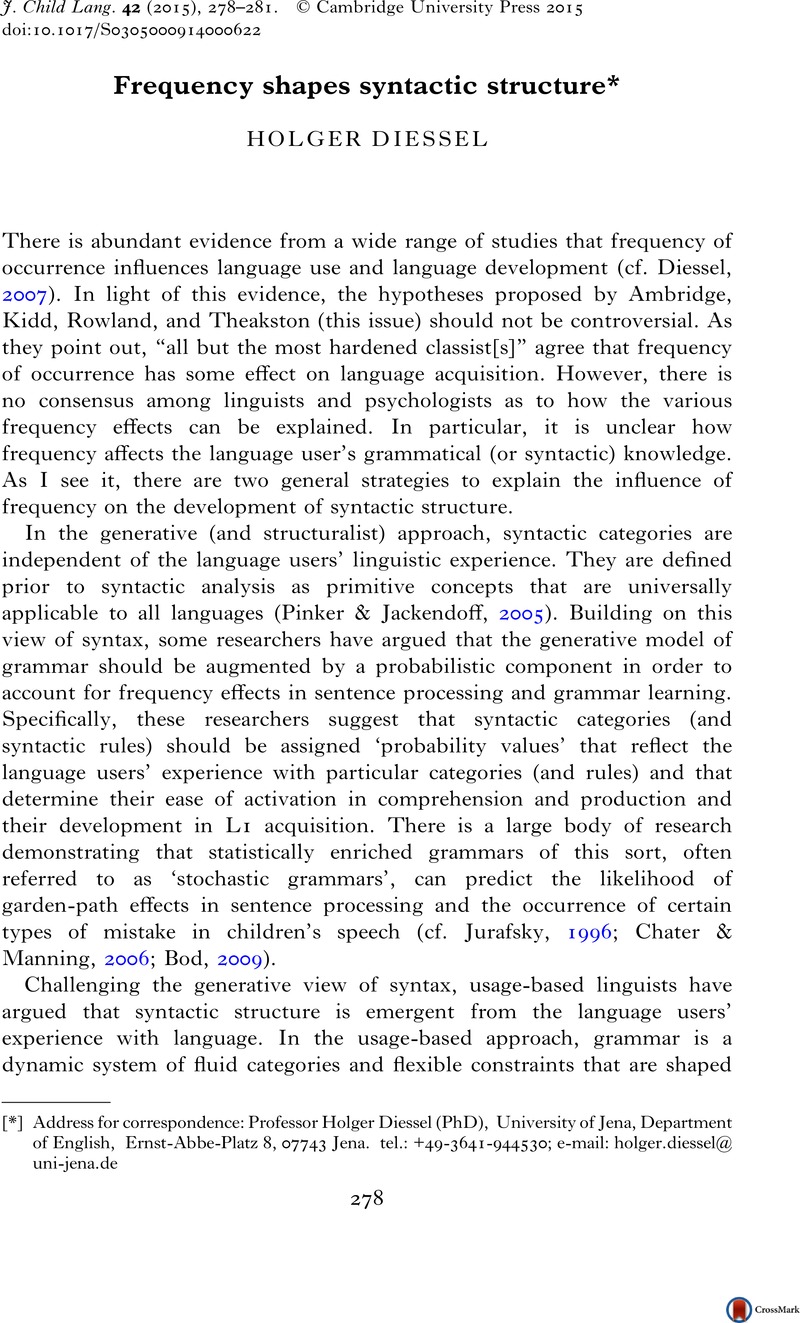Crossref Citations
This article has been cited by the following publications. This list is generated based on data provided by Crossref.
Kjærbæk, Laila
and
Basbøll, Hans
2016.
Interaction between input frequency, transparency and productivity in acquisition of noun plural inflection in Danish.
Poznan Studies in Contemporary Linguistics,
Vol. 52,
Issue. 4,
Smolka, Eva
and
Ravid, Dorit
2019.
What is a verb?.
The Mental Lexicon,
Vol. 14,
Issue. 2,
p.
169.



